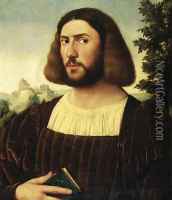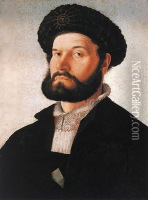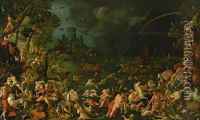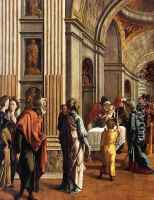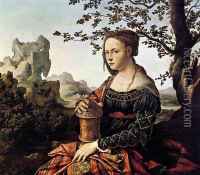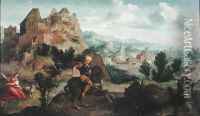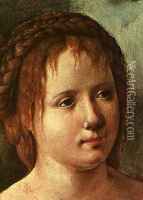Jan Van Scorel Paintings
Jan van Scorel was a Dutch painter, who played a leading role in introducing aspects of Italian Renaissance painting into Dutch and Flemish Renaissance painting. Born in the town of Schoorl, near Alkmaar in the Netherlands, in 1495, van Scorel was one of the early adopters of the innovations brought by Raphael and Michelangelo during the High Renaissance.
Van Scorel's training began with Cornelis Willemsz in Haarlem, and later, he traveled extensively, which greatly influenced his style. In 1518, he went on a pilgrimage to the Holy Land, and on his way, he stayed in Venice where he was influenced by the works of Giovanni Bellini and Giorgione. His travels took him to Nuremberg, where he met Albrecht Dürer, and to Rome, where he was appointed by Pope Adrian VI as the keeper of the Belvedere Palace, which housed the papal collection of classical statues and Renaissance artworks.
During his time in Italy, van Scorel absorbed the Italian approach to composition and figure study, which he later merged with the northern European painting tradition. Upon his return to the Netherlands around 1524, he introduced a softer style, atmospheric perspective, and a warmer palette into Dutch art, which contrasted with the detailed and often meticulous style of his contemporaries.
Van Scorel's works show a mastery of chiaroscuro and a skilled use of color and texture. Some of his notable works include 'The Baptism of Christ', the large altarpiece 'Sint Odulphus', and a series of portraits that display his keen eye for detail and understanding of human anatomy.
Throughout his career, van Scorel had many pupils and followers who were influenced by his style. He also held various positions, including that of canon at the St. Martin's Cathedral in Utrecht, which allowed him to continue his work as an artist while fulfilling his ecclesiastical duties.
Jan van Scorel died in 1562 in Utrecht. His contributions to Dutch art were significant in that he helped bridge the gap between the Renaissance art of Italy and the developing styles in the Netherlands. His work paved the way for later Dutch Masters, who would bring Dutch art to its golden age in the 17th century.


